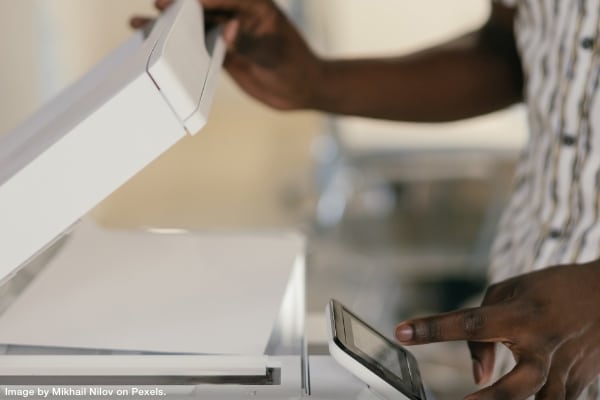
There are many reasons to go paperless. Paper is heavy. In fact, a full 4-drawer filing cabinet can weigh over 50kg! Paper is also bulky and takes up a lot of space. When you go paperless, you can even downsize because you do not need extra space to store all your paperwork. If you are moving, reducing the amount of paper can reduce moving costs. Many people believe that converting their paperwork to a digital format is the answer. It is certainly a good option. However, there are some factors to take into consideration.
Start Now and Have a Paperless Future
It’s challenging to convert your years’ worth of paperwork to digital format – especially if you continue to receive and generate lots of paper. Firstly, start now and work forward in a paperless manner. Here are some things you can do:
- Switch to paperless billing for utilities, banking, invoices, and receipts.
- Use an online document signature service like AdobeSign or Docusign.
- Consider adopting a customer relationship management platform and a project management platform.
- Collect information using Google Forms or JotForm.
- Use apps that reduce paper clutter, such as to-do lists, calendars, and meeting schedulers.
Folder Structure and File Names
If you’re going to go paperless, you need to build a folder structure on your computer’s hard drive. Many people use the same folder names as the paper folders. For example, you might name a top-level folder “HOME” and create several sub-folders such as:
- 2020 Bathroom Renovation
- Home Insurance
- Home Maintenance
- Property Taxes
- Strata Regulations and Meetings
Create some rules on how you will name your files. I have some suggestions in my post on file naming conventions. Once you determine your folder structure and file naming convention, write it down! This will ensure consistency as you go paperless.
Don’t Convert Paper Clutter to Digital Clutter
Take a look at your previous years’ paperwork. Is it a disorganized mess? If so, converting it to digital format can worsen the problem – unless you have a plan. The first step is to review my post on downsizing your paperwork. Reduce the number of documents you have and ensure you organize them well. When that is complete, you will better understand the amount of paperwork you want to digitize.
Consider the Investment
Scanning documents takes time, and you may need to purchase a better scanner. Ask yourself if the amount of paper you have warrants the time and effort to digitize. If you are satisfied that your paperwork can remain in its physical format after organizing it, grab a cocktail and relax. If you want to continue to go paperless, ensure your folder structure and file naming convention are in place, then move on to digitizing.
Are You Allowed to Digitize Your Documents?
In some cases, you must keep the original paper record even if you convert it to digital format. For example, Canada generally allows electronic accounting and payroll records, but not all countries do. In addition, some legally binding contracts must be kept in paper format, especially if they were created on paper. While you can create a digital copy for easy access, you must keep the original. Please work with legal, financial, and other professionals to ensure you meet the regulations for your region and industry.
Security and Backup
Finally, before you go paperless, ensure you have an adequate backup system. Ideally, you should have two backup copies, one local (an external hard drive) and one off-site, such as a cloud backup. Ensure you encrypt and password-protect your backups to reduce the risk of hacking, ransomware, etc.
Ready, Set, Scan
When you’re ready to scan your documents, run a few tests with your scanner to make sure the text and images are legible. Also, scan them into PDF/A format. It is the format the International Standards Organization recommends for archiving electronic documents. This format is less likely to become obsolete in the future.
Deciding to go paperless can reduce clutter and save space, but it does require a thoughtful, systematic approach to reap the full benefits. If you’re considering a paper-reduced future, contact the Out of Chaos team. We’d love to help.
